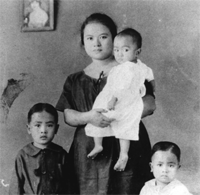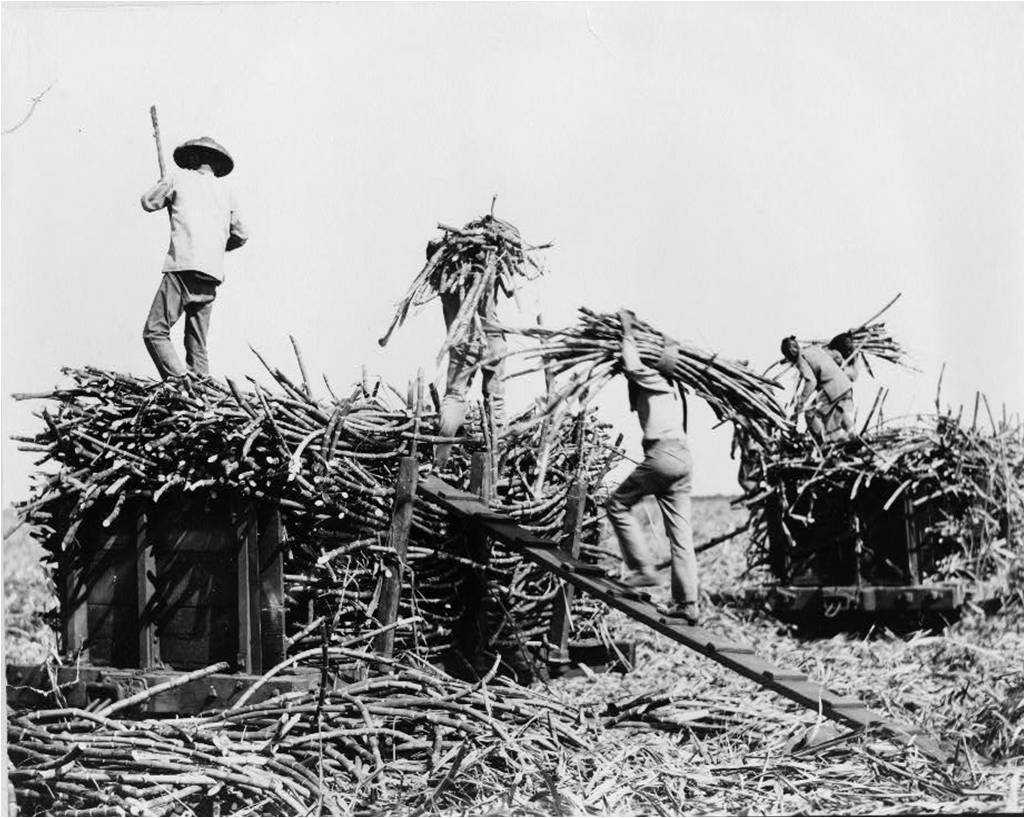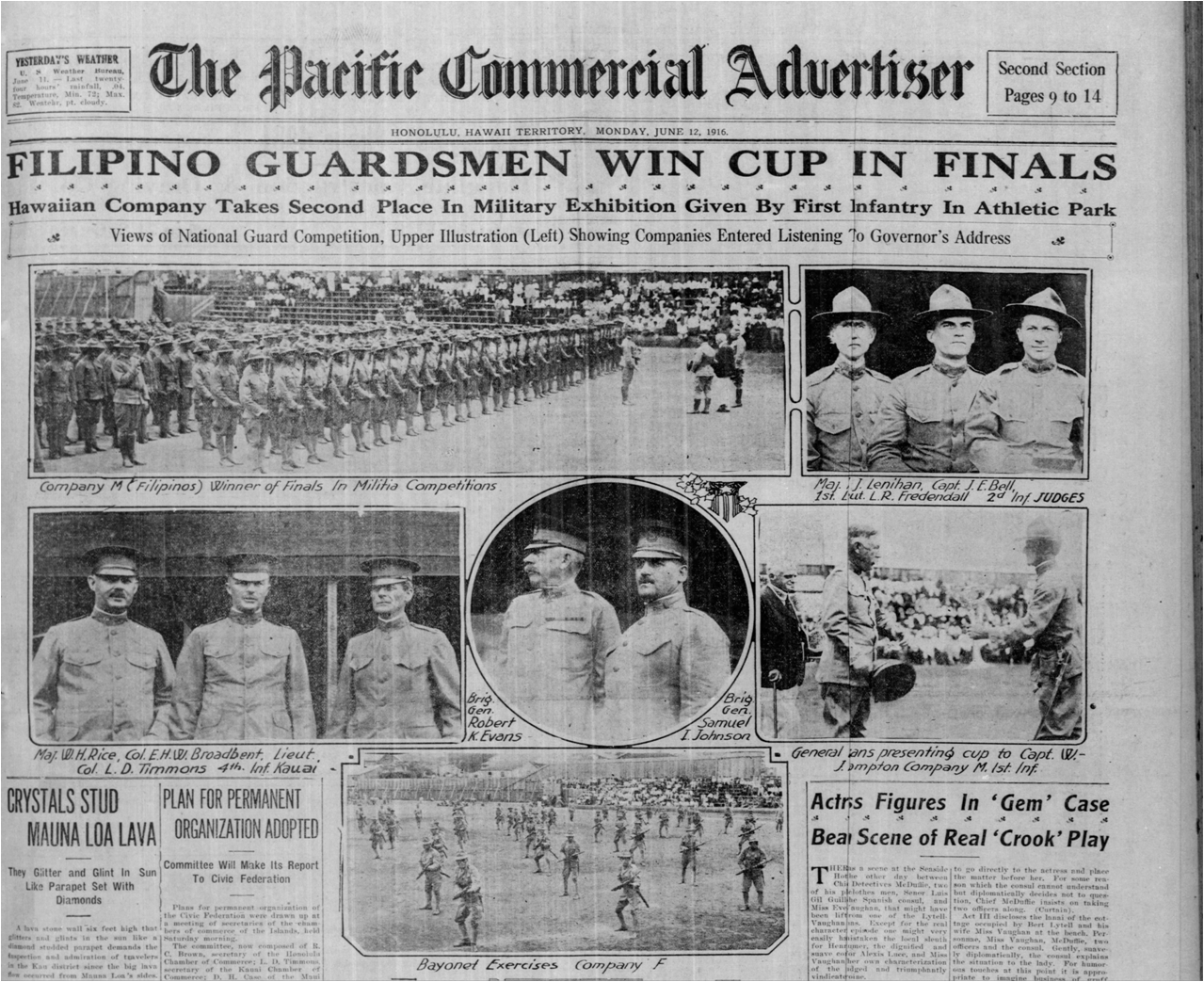


SAKADAS AND SOLDIERS:
HAWAII FILIPINOS IN WORLD WAR I
Filipinos in the Hawaii National Guard
Being last mass migration of the laborers to Hawai'i's plantations, Filipinos were mostly employed as day-laborers, where a worker is assigned daily a particular duty and paid a set rate for such tasks as digging ditches and stripping, cutting or loading cane. Day-laborers comprised two-thirds of plantation workers, and their average earning of $0.81 a day was 20% less than non-day-laborers. Assigned the lowest paid day-labor tasks, Filipinosí average earnings were one third less than that of other non-day-laborers.

Filipinos laborers were eager to supplement their wages and, as soldiers, were originally welcomed with open arms. In November 1916 two Filipino Companies (M and B) were so outstanding they won commendations in maneuvers and drill competitions, and their superior performance was cited as qualifications for citizenship.

The draft took effect in Hawaii in mid-1918, and sugar planters wanted to fulfill the draft requirements by having Filipinos enlist voluntarily, rather than require members of their own families to be drafted. Filipinos enthusiastically showed up to be inducted into the U.S. Army. More were accepted when the war department waived the minimum height and weight requirements in order to fill the Hawaii quota.
HOME |
Filipino-American
Historical Society of Hawaii
|
Help
Exhibits
| Publications
|
Collections
| Student/Teachers
Photographs
& Maps | Biographies & Oral Histories
| Community Organizations
WWI
Veterans | Centennial
Commission (2006)
Copyright © 2006 by the Filipino-American Historical Society of Hawaii. Updated 2020.